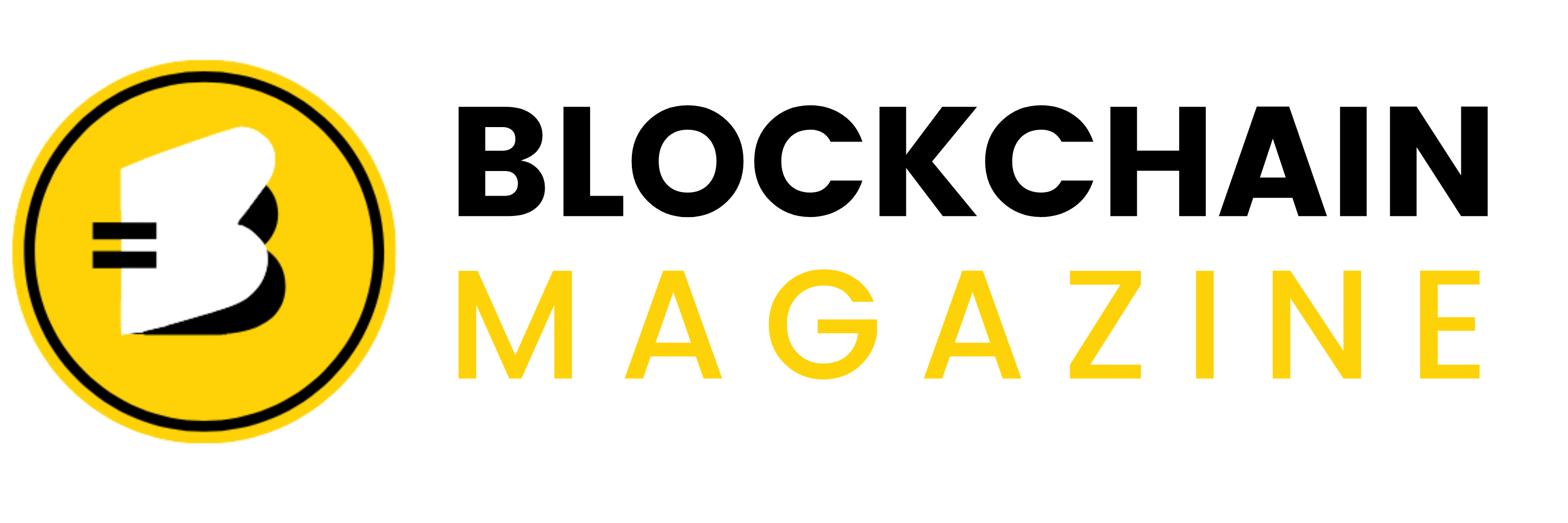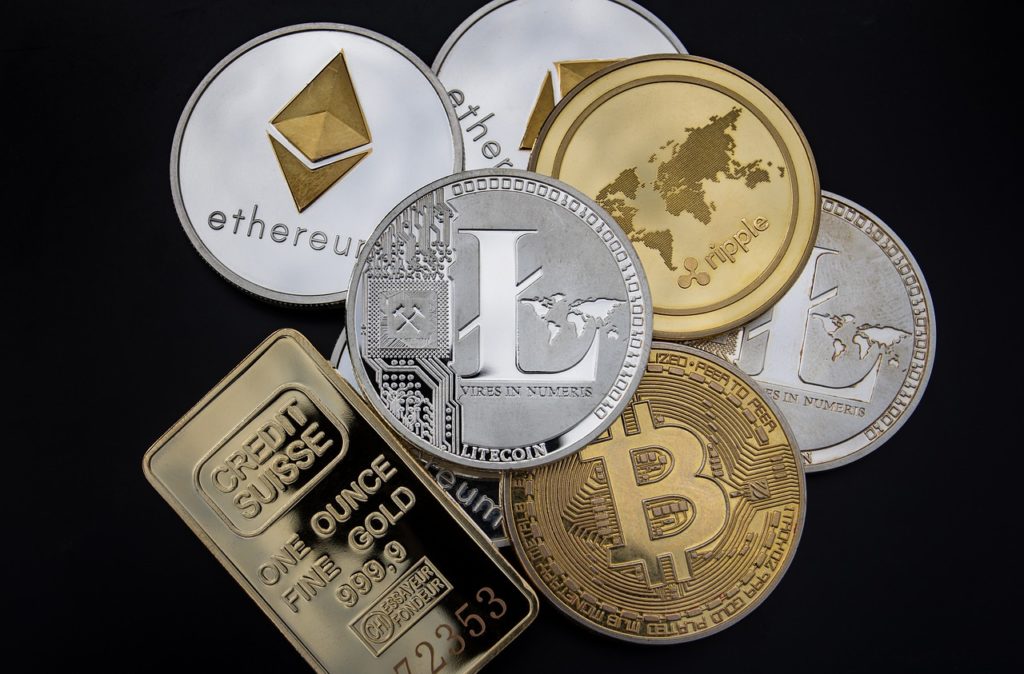Best Cryptos for the Future: TICS Eyes $15 Post Mainnet While Binance and Ethereum Stabilize at $648 and $2,625
Cryptocurrency continues to revolutionize the financial landscape, with new technologies emerging to improve efficiency and decentralization. As the crypto market expands, a few players have risen above the noise, capturing the attention of investors and enthusiasts alike. Ethereum (ETH) and Binance Coin (BNB) have long been titans in the space, with established infrastructures and robust ecosystems. Yet, a fresh contender, Qubetics ($TICS), is rapidly making waves, offering unique solutions that could help push the industry toward mainstream adoption. But why are these three cryptocurrencies considered the best cryptos for the future?
Ethereum’s struggles with scalability and transaction fees have created space for other innovative projects. As Ethereum continues to battle issues such as high gas fees and network congestion, Qubetics appears to be stepping up with a solution that promises more seamless, low-cost cross-border transactions. Binance, on the other hand, has maintained its spot as a dominant force, with the BNB Chain powering various decentralized applications. Still, what makes Qubetics stand out among these giants, and why could it become the next big thing in the crypto world?
Qubetics: A Game-Changer in Cross-Border Transactions
In an increasingly globalized world, the need for seamless cross-border transactions has never been more apparent. Whether you’re a business owner making international payments or an individual sending money abroad, the process is often slow, expensive, and fraught with obstacles. Qubetics, a new blockchain project, aims to change that by revolutionizing how cross-border transactions are executed.
What makes Qubetics stand out is its ability to offer fast, affordable, and secure international transfers. Unlike traditional financial systems, which are bogged down by intermediaries and outdated infrastructure, Qubetics uses its innovative blockchain technology to create a more efficient, transparent, and cost-effective method for sending and receiving funds across borders. Businesses, professionals, and individuals alike can benefit from this cutting-edge system.
Take, for example, a small business owner in the United States looking to pay a supplier in Europe. Using traditional banking systems or platforms like PayPal, this business owner would likely face high fees, long waiting times, and potential currency conversion issues. With Qubetics, however, this same transaction could be completed in a fraction of the time and at a much lower cost. By eliminating the need for middlemen and reducing transaction fees, Qubetics is positioned to become a preferred solution for cross-border payments.
Qubetics’ presale is currently in its 21st stage, and it has already sold more than 470 million tokens, raising over $12.6 million. Investors can still purchase $TICS tokens at $0.0733 in the ongoing presale, which is expected to close soon. Early adopters stand to gain significant returns, with analysts predicting a 240% ROI by the end of the best crypto presale, and up to 13,525% ROI after the mainnet launch. These returns highlight just how promising Qubetics is in the long run, especially as it continues to solve real-world problems that have hindered other blockchain projects.
![]()
Ethereum: A Blockchain with Limitations, Yet Immense Potential
Ethereum remains one of the most recognized and trusted blockchain platforms in the world. It has powered a wave of decentralized applications (dApps) and smart contracts, and its role in the world of decentralized finance (DeFi) cannot be overstated. However, despite its success, Ethereum still faces several hurdles that hinder its future growth and adoption.
The main issue with Ethereum has always been its scalability. As more users and applications flock to the network, transaction fees, also known as “gas fees,” have skyrocketed, making it less accessible to smaller users. This issue, combined with network congestion, has caused many to look for alternatives. Although Ethereum is making strides toward improving scalability with Ethereum 2.0, it is still a work in progress. In the meantime, other blockchains like Qubetics and Binance Coin are stepping in to fill the void.
That being said, Ethereum’s position as a leader in the crypto space should not be discounted. The network is home to a vast ecosystem of decentralized applications, and its transition to proof-of-stake (PoS) in Ethereum 2.0 promises to reduce energy consumption, furthering its appeal as a sustainable blockchain solution. Additionally, with Ethereum’s current price hovering around $2,625, there may be a buying opportunity for those looking to invest in a platform that has consistently shown its staying power in the market.
Looking ahead, Ethereum’s future appears promising, but it’s not without challenges. With the ongoing development of Ethereum 2.0, scalability improvements are expected to reduce gas fees and network congestion, which could increase its adoption and overall value. Analysts suggest that Ethereum’s price could see significant growth in the coming years, with some forecasts predicting that it could surpass the $3,000 mark once these improvements are fully implemented.
Ethereum’s role in DeFi and NFT ecosystems will continue to drive demand for the network, while the growing interest in Layer-2 solutions could further ease congestion and enhance Ethereum’s long-term scalability. If Ethereum can successfully overcome its scalability challenges and provide a more efficient user experience, its position as the leading smart contract platform could solidify, making it a strong contender for continued growth and a potential future rally in price.

Binance Coin: The Leading Exchange Token with Expanding Use Cases
Binance Coin (BNB) has long been the native token of the Binance Exchange, one of the largest and most popular cryptocurrency exchanges in the world. However, BNB’s use case has expanded far beyond just paying for trading fees. Today, Binance Coin powers the Binance Smart Chain (BSC), which supports decentralized applications (dApps), non-fungible tokens (NFTs), and decentralized finance (DeFi) projects.
Recently, BNB made headlines after a 13% price rally over the weekend, fueled by rumors surrounding a new memecoin launch, TST, allegedly linked to Binance Co-Founder Changpeng Zhao (CZ). Although CZ denied any involvement with TST, the speculation drove significant market attention to BNB, pushing its price from $569 to $648 in just a few days. Despite the controversy surrounding the memecoin, BNB’s position in the market remains strong, especially with the growing adoption of the Binance Smart Chain.
BNB’s social media mentions have hit a 60-day peak, indicating renewed investor interest. If this momentum continues, BNB could see further gains, especially as the broader crypto market begins to show signs of recovery. Binance Coin has already demonstrated its resilience in the face of market downturns, and its growing ecosystem of dApps and DeFi projects makes it a compelling option for future growth.
The Importance of Cross-Border Transactions in Blockchain Technology
Cross-border transactions have long been a headache for businesses and individuals alike. Traditional systems involve multiple intermediaries, high fees, and delays that can make international transactions feel like a chore. Blockchain technology, however, is poised to change all of that by enabling fast, secure, and cost-effective cross-border payments.
Cross-border transactions are a key area where blockchain can disrupt the traditional financial system. By eliminating intermediaries, blockchain allows for peer-to-peer transfers that are not only faster but also more affordable. For example, blockchain solutions like Qubetics enable businesses to send payments to suppliers across the globe in a matter of minutes, with minimal fees involved. This opens up new opportunities for global trade and financial inclusion, allowing businesses and individuals to participate in the global economy more efficiently.
As blockchain technology continues to evolve, cross-border transactions will become increasingly seamless. Projects like Qubetics are leading the charge, offering innovative solutions to address the challenges that have plagued traditional financial systems for years. Whether it’s sending money to family abroad or settling payments between international companies, blockchain-based cross-border transactions will become an integral part of the future of finance.

Conclusion
The best cryptos for the future are those that can adapt to real-world needs and continue to innovate. Ethereum and Binance Coin have already proven their value, but projects like Qubetics are redefining what is possible with blockchain technology. As Qubetics continues its presale and grows its user base, it has the potential to become a major player in the crypto world, especially with its focus on cross-border transactions. If you’re looking to invest in a crypto project with real-world utility, Qubetics is one to watch closely.
Now is the time to act. The Qubetics presale is in its 21st stage, and with analysts predicting massive returns after the mainnet launch, there’s no better time to get involved. Don’t miss out on this opportunity to invest in the future of blockchain technology.
For More Information:
Qubetics: https://qubetics.com
Telegram: https://t.me/qubetics
Twitter: https://x.com/qubetics
Stay informed with daily updates from Blockchain Magazine on Google News. Click here to follow us and mark as favorite: [Blockchain Magazine on Google News].
Get Blockchain Insights In Inbox
Stay ahead of the curve with expert analysis and market updates.
latest from tech
Disclaimer: Any post shared by a third-party agency are sponsored and Blockchain Magazine has no views on any such posts. The views and opinions expressed in this post are those of the clients and do not necessarily reflect the official policy or position of Blockchain Magazine. The information provided in this post is for informational purposes only and should not be considered as financial, investment, or professional advice. Blockchain Magazine does not endorse or promote any specific products, services, or companies mentioned in this posts. Readers are encouraged to conduct their own research and consult with a qualified professional before making any financial decisions. The featured image used is just a creative depiction of the title and it does not intend to hurt sentiments of any person or institution. If it hurts anyone sentiments, please do not hesitate to reach out to Blockchain Magazine.

 Bitcoin
Bitcoin  Ethereum
Ethereum  XRP
XRP  Tether
Tether  Solana
Solana  USDC
USDC  Dogecoin
Dogecoin  Cardano
Cardano  Lido Staked Ether
Lido Staked Ether  TRON
TRON  Wrapped Bitcoin
Wrapped Bitcoin  Wrapped stETH
Wrapped stETH  Chainlink
Chainlink  Avalanche
Avalanche  Sui
Sui  Stellar
Stellar  Litecoin
Litecoin  Toncoin
Toncoin  Shiba Inu
Shiba Inu  Hedera
Hedera  LEO Token
LEO Token  USDS
USDS  Hyperliquid
Hyperliquid  Polkadot
Polkadot  WETH
WETH  MANTRA
MANTRA  Bitcoin Cash
Bitcoin Cash  Bitget Token
Bitget Token  Ethena USDe
Ethena USDe  Wrapped eETH
Wrapped eETH  Uniswap
Uniswap  Monero
Monero  NEAR Protocol
NEAR Protocol  Pepe
Pepe  WhiteBIT Coin
WhiteBIT Coin  Bittensor
Bittensor  Ondo
Ondo  Aave
Aave  Aptos
Aptos  Internet Computer
Internet Computer  Dai
Dai  Official Trump
Official Trump  Mantle
Mantle  Ethereum Classic
Ethereum Classic  Tokenize Xchange
Tokenize Xchange  OKB
OKB  Gate
Gate  sUSDS
sUSDS  Sonic (prev. FTM)
Sonic (prev. FTM) 




